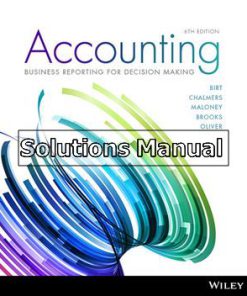1. Functions
1.1 Review of functions
1.2 Representing functions
1.3 Inverse, exponential, and logarithmic functions
1.4 Trigonometric functions and their inverses
2. Limits
2.1 The idea of limits
2.2 Definitions of limits
2.3 Techniques for computing limits
2.4 Infinite limits
2.5 Limits at infinity
2.6 Continuity
2.7 Precise definitions of limits
3. Derivatives
3.1 Introducing the derivative
3.2 Rules of differentiation
3.3 The product and quotient rules
3.4 Derivatives of trigonometric functions
3.5 Derivatives as rates of change
3.6 The Chain Rule
3.7 Implicit differentiation
3.8 Derivatives of logarithmic and exponential functions
3.9 Derivatives of inverse trigonometric functions
3.10 Related rates
4. Applications of the Derivative
4.1 Maxima and minima
4.2 What derivatives tell us
4.3 Graphing functions
4.4 Optimization problems
4.5 Linear approximation and differentials
4.6 Mean Value Theorem
4.7 L’Hôpital’s Rule
4.8 Newton’s Method
4.9 Antiderivatives
5. Integration
5.1 Approximating areas under curves
5.2 Definite integrals
5.3 Fundamental Theorem of Calculus
5.4 Working with integrals
5.5 Substitution rule
6. Applications of Integration
6.1 Velocity and net change
6.2 Regions between curves
6.3 Volume by slicing
6.4 Volume by shells
6.5 Length of curves
6.6 Surface area
6.7 Physical applications
6.8 Logarithmic and exponential functions revisited
6.9 Exponential models
6.10 Hyperbolic functions
7. Integration Techniques
7.1 Integration Strategies
7.2 Integration by parts
7.3 Trigonometric integrals
7.4 Trigonometric substitutions
7.5 Partial fractions
7.6 Other integration strategies
7.7 Numerical integration
7.8 Improper integrals
8. Differential Equations
8.1 Basic ideas
8.2 Direction fields and Euler’s method
8.3 Separable differential equations
8.4 Special first-order differential equations
8.5 Modeling with differential equations
9. Sequences and Infinite Series
9.1 An overview
9.2 Sequences
9.3 Infinite series
9.4 The Divergence and Integral Tests
9.5 The Ratio, Root, and Comparison Tests
9.6 Alternating series
10. Power Series
10.1 Approximating functions with polynomials
10.2 Properties of Power series
10.3 Taylor series
10.4 Working with Taylor series
11. Parametric and Polar Curves
11.1 Parametric equations
11.2 Polar coordinates
11.3 Calculus in polar coordinates
11.4 Conic sections
12. Vectors and Vector-Valued Functions
12.1 Vectors in the plane
12.2 Vectors in three dimensions
12.3 Dot products
12.4 Cross products
12.5 Lines and curves in space
12.6 Calculus of vector-valued functions
12.7 Motion in space
12.8 Length of curves
12.9 Curvature and normal vectors
13. Functions of Several Variables
13.1 Planes and surfaces
13.2 Graphs and level curves
13.3 Limits and continuity
13.4 Partial derivatives
13.5 The Chain Rule
13.6 Directional derivatives and the gradient
13.7 Tangent planes and linear approximation
13.8 Maximum/minimum problems
13.9 Lagrange multipliers
14. Multiple Integration
14.1 Double integrals over rectangular regions
14.2 Double integrals over general regions
14.3 Double integrals in polar coordinates
14.4 Triple integrals
14.5 Triple integrals in cylindrical and spherical coordinates
14.6 Integrals for mass calculations
14.7 Change of variables in multiple integrals
15. Vector Calculus
15.1 Vector fields
15.2 Line integrals
15.3 Conservative vector fields
15.4 Green’s theorem
15.5 Divergence and curl
15.6 Surface integrals
15.6 Stokes’ theorem
15.8 Divergence theorem
Appendix A. Algebra Review
Appendix B. Proofs of Selected Theorems













